Britain’s Mont Ventoux: climbing the Bwlch the hard way
Just like the ‘Giant of Provence’, the Bwlch in South Wales can be tackled three ways. Simon Warren joined two local pros to see if he could complete the trio in a single, epic day - Photographs by Daniel Gould
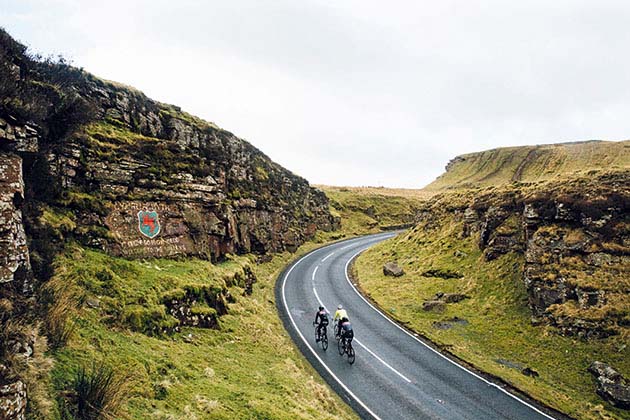
The Bwlch

A couple of years ago I made the journey to Provence on a quest to join the Club des Cinglés, an establishment whose membership requires the completion of a single task, to ride all three ascents of the legendary Mont Ventoux in a 24-hour period.
Unlike other big events such as the Etape du Tour or the Marmotte, there’s no set date needed for your attempt, you just register online, receive your timing cards in the post, pick a day that suits and go for it. It’s such a fantastic ride that it got me wondering if I could devise a similar challenge here in the UK, to pay homage to this great event?
I began the search for a suitable venue, a climb big enough and with enough routes to the top to fit the bill. We aren’t blessed with anything near the scale and grandeur of Ventoux but after a little page-turning, a candidate presented itself in South Wales.
Due north of Bridgend, sitting high above the Rhondda Valley stands the Bwlch, and just like Ventoux there are three distinctly different routes to its summit.
The word ‘bwlch’ (approximately pronounced ‘b-oo-lch’) is Welsh for ‘gap’, or pass, and you’ll see this appendage on many notorious roads such as the Bwlch-y-Groes, but this hill, this is simply named ‘the’ Bwlch.
Well known to locals, the climb has attracted national fame more recently due to its inclusion in the Dragon Ride sportive. Over the years, as the route has evolved, it has taken competitors up and down all three of its challenging ascents on its way to and from the wilds of the Brecon Beacons.
>>> Cyclosportive and cycling events calendar 2018
Get The Leadout Newsletter
The latest race content, interviews, features, reviews and expert buying guides, direct to your inbox!
Three-pronged attack
With the location sorted, it was time to rustle up a couple of riding partners, so who better than local JLT-Condor pros, Jon Mould and Tom Moses? I say local, Moses is actually from Keighley in West Yorkshire but has recently relocated to South Wales to live with his girlfriend. Mould, though, was born and bred in Newport, home to the famous velodrome — handy as he’s one of the country’s best track riders — and he’s also an authority on the hills in the region.
The three bases of the Bwlch lie in Treorchy to the north, Pontrhydyfen to the west and to avoid the chaos of Bridgend, Sarn to the south. And like the Ventoux challenge, you can start your ride on whichever side you desire, so long as you ride all three.
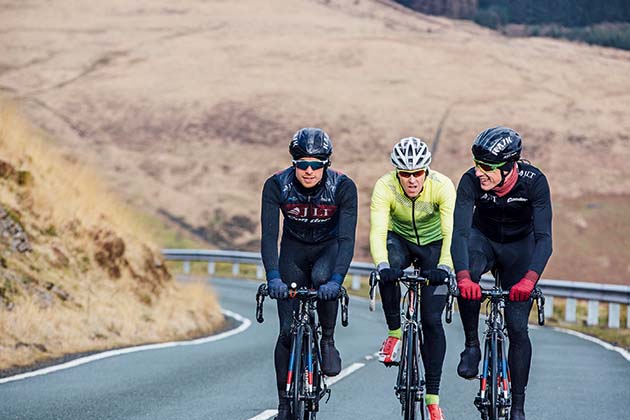
The Bwlch
I chose Sane as our starting point to tackle first the southern flank, then the western side to Pontrhydyfen and back, before finishing with the ascent from the north.
Now, I know the first 11 kilometres on the road from Sarn to Price Town are far from spectacular but I was keen to pack in as much altitude as possible and riding it this way will give you a total distance of 85km with an altitude gain of 1,815m, which adds up to a substantial amount of climbing.
With the congestion of the early roads out of the way and with legs warmed up, the proper climbing starts in Price Town with a nasty ramp up away from the old clock tower. I let the two young guys set the pace up here and just sat in behind but once the steep gradient faded I rolled up to the front.
Climbing with the pros
Holding pace up a serious climb with two of the country’s top riders and being able to hold a conversation was never going to be easy, but I had to give it a go. Etiquette dictated that Mould should choose the pace — he’s the pro, he’s the one with a training plan to follow, they are his roads I am visiting.
The key is to stay calm, appear to be able to speak freely on the surface but paddle like hell underneath, breathing through every available orifice in order to act as if you’re just pottering along when in reality you’re hanging on for grim death.
I started by asking them what they liked about the hills of South Wales. Moses was straight in with his reply: “They are warmer than those in Yorkshire; being 200 miles further south you can really feel the difference in the climate, but they aren’t as steep, and there aren’t as many cobbles as there are around Keighley.”
>>> The Giant of Provence: The magic and mystique of Mont Ventoux
As you might imagine, a pro rider needs to train every day through the winter — why do you think your Instagram feed is always full of them on some sunny mountain somewhere? It might not be the Mediterranean, but in South Wales the warmer temperatures do mean the climbs are less likely to be closed. On the day, even though the skies threatened, we did manage to stay dry and the sun even broke through a few times to illuminate the hills as we plodded up beneath leaden clouds.
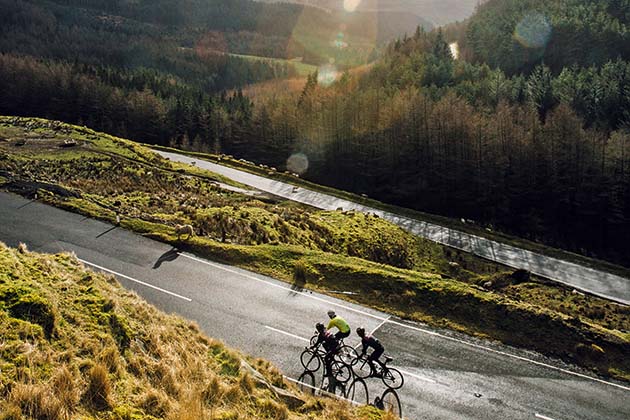
The Bwlch
Mould explained that the pitch of these climbs is perfect for long, in-the-saddle efforts, never too steep but always a challenge, and being from Newport he’s got plenty of similar roads on his doorstep. Heading north, he can ride the Tumble and Llangynidr Mountain, while heading east there’s Caerphilly Mountain on the way to Rhigos, Bryn Du and the Bwlch.
Triple glory
Like Ventoux, each side of the Bwlch has its own characteristics, from the sheltered, tree-lined slopes of the south to the long steady gradients of the western flank, and the shorter route from the north.
One thing they all have in common, though, are the splendid hairpin bends that punctuate each ascent to give you that mountain-climbing feeling as you sweep round them, rising rapidly above the road below.
On the southern side, the first of these fantastic corners lies trapped in a gully in the shadow of the tall peaks around it and the road rises on a stiff gradient to reveal fantastic views down the valley.
Rounding the next left-hand turn, you arrive at the junction of the three paths, but not their summit. To gain the most elevation from each ascent you must turn at the junction, pass through the small canyon of rocks with its ‘Welcome to the Valleys’ sign and continue over exposed ground to continue climbing.
Heading into the wind now, the pace increased just a touch and the conversation ceased momentarily as we pushed for the first summit, rolled over and began to hurtle down the other side. With a ride that is basically composed of three ups and three downs you use the descents to stretch the legs a little, to refresh yourself, have a bite to eat, so that when you reach the base you can turn round and hit the climbing hard right away.
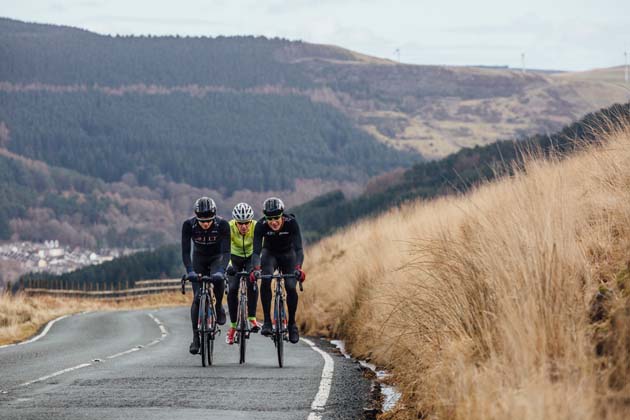
Once you reach Pontrhydyfen you’ll have been heading downhill for just over 16km, which means you’ve got to turn round and climb back up the very same 16km. Similar to the first ascent from Sarn, the lower slopes are gentle and a bit congested, but once through Abergwynfi it’s just you, the road and the rolling hills.
Climbing ever higher, the road hugs the side of the mountain, rolling round its contours up to the next giant hairpin bend. Rounding this, you climb a little steeper and looking left, the most wonderful view down the valley is revealed. Next, bending right, you soon arrive at the summit for the second time — two down, one to go.
Dropping off the top, the two pros instinctively took to the centre of the carriageway. Why? To avoid any wayward sheep that happen to stray from the verges. This sort of local knowledge is well worth taking on board as hitting a solid ball of wool at 40mph is never going to end well.
Northern exposure
Back at the junction we continued by turning left and plummeted down yet more hairpins into Treorchy. If you’re heading to the high mountains in the summer then there are few better places in Britain to hone your climbing style and descending techniques through these multiple tight corners.
In order to again maximise elevation we rode right into the heart of Treorchy before turning round to pick our way back to the junction with the A4061 and begin the final climb. This, I have to say, is my favourite side. It may not be quite as tough as the southern flank but the scenery is majestic. As you rise you catch sight of the road high above making its way up the mountainside, a daunting view for tired legs but an exhilarating one for fresh ones.
>>> From Colombia to Cumbria: The 16 most brutal Strava climbs anywhere in the world
Back sitting in the shelter of Mould and Moses, I listened to them compare schedules and logistics for the following weeks. Moses was off for a training block in Lanzarote while Mould was due shortly to fly out to Brisbane to begin preparations for the Commonwealth Games, where he will be representing Wales on the track and the road. It turns out a good knowledge of airport long-stay car parks is essential to the life of the jet-setting pro cyclist.
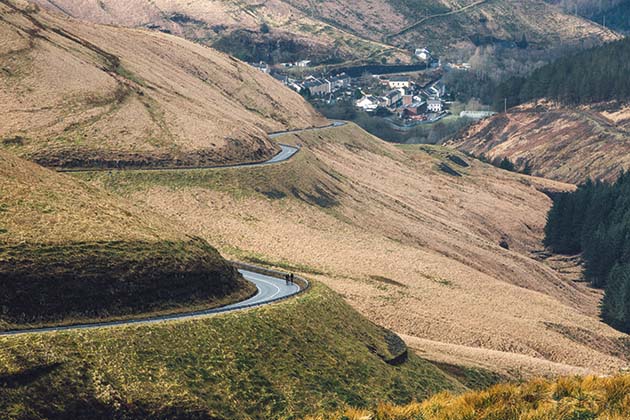
The Bwlch
Up this final ascent, I made sure I was soaking in the scenery with my eyes, and of course my iPhone, as the road swept right then left through its twin bends beneath the towering hillsides. Once back at the junction, logic says head straight on, but the challenge dictates you must turn right to complete the elevation of the final ascent, to get all you can out of the mountain before you head home. Then and only then can you turn round and begin the final descent.
Hands on the drops, I did my best to follow the wheels but as anyone who’s ever ridden behind a pro will know, not only can they drop you like a hot stone going uphill, their ability to pick the right line heading back down will have similar results.
We parted ways with Moses in Price Town. He told us he was heading back over the Bwlch — yes, for a fourth ascent — and then carrying on to ride over Rhigos. When Moses mentioned Rhigos, Mould scoffed, “Rhigos isn’t a proper climb,” at which point I had to say, “Excuse me, it’s 5.6 kilometres long with an average gradient of five per cent, I’d call that a proper climb!”
“Well, it’s never troubled me,” Mould countered.
Oh, to have the legs of a pro cyclist.
Do enough reps of the Bwlch’s three ascents and maybe one day you will.
Ventoux vs Bwlch: How the two rides compare
Bwlch three ways 85km +1,815m
Strava segments: From Pontrhydyfen to Top Bwlch, Official 100Climbs No99 The Bwlch, Bwlch from Treorchy
Club des Cinglés 136km +4,540m
Strava segments: Mont Ventoux via Bedoin, Mont Ventoux, Mont Vent

Meet the pros
Jon Mould
Mould is 26 and is just about to represent Wales at his third Commonwealth Games. On his palmarès he has nine Tour Series wins and together with Ed Clancy holds the Madison kilo TT record at 53.553 seconds. He’s been a pro since 2012 and joined JLT-Condor in 2016.
Tom Moses
Moses is 25 and has ridden for JLT-Condor since 2014, during which time he has notched up some exceptional victories such as a stage in the Tour de Normandie and winning the East Midlands International CiCLE Classic. He rode in the 2014 Commonwealth Games and is now one of the team’s most trusted domestiques.

Thank you for reading 20 articles this month* Join now for unlimited access
Enjoy your first month for just £1 / $1 / €1
*Read 5 free articles per month without a subscription

Join now for unlimited access
Try first month for just £1 / $1 / €1

Nigel Wynn worked as associate editor on CyclingWeekly.com, he worked almost single-handedly on the Cycling Weekly website in its early days. His passion for cycling, his writing and his creativity, as well as his hard work and dedication, were the original driving force behind the website’s success. Without him, CyclingWeekly.com would certainly not exist on the size and scale that it enjoys today. Nigel sadly passed away, following a brave battle with a cancer-related illness, in 2018. He was a highly valued colleague, and more importantly, an exceptional person to work with - his presence is sorely missed.
-
 A bike rack with an app? Wahoo’s latest, and a hub silencer – Sea Otter Classic tech highlights, Part 2
A bike rack with an app? Wahoo’s latest, and a hub silencer – Sea Otter Classic tech highlights, Part 2A few standout pieces of gear from North America's biggest bike gathering
By Anne-Marije Rook
-
 Cycling's riders need more protection from mindless 'fans' at races to avoid another Mathieu van der Poel Paris-Roubaix bottle incident
Cycling's riders need more protection from mindless 'fans' at races to avoid another Mathieu van der Poel Paris-Roubaix bottle incidentCycling's authorities must do everything within their power to prevent spectators from assaulting riders
By Tom Thewlis